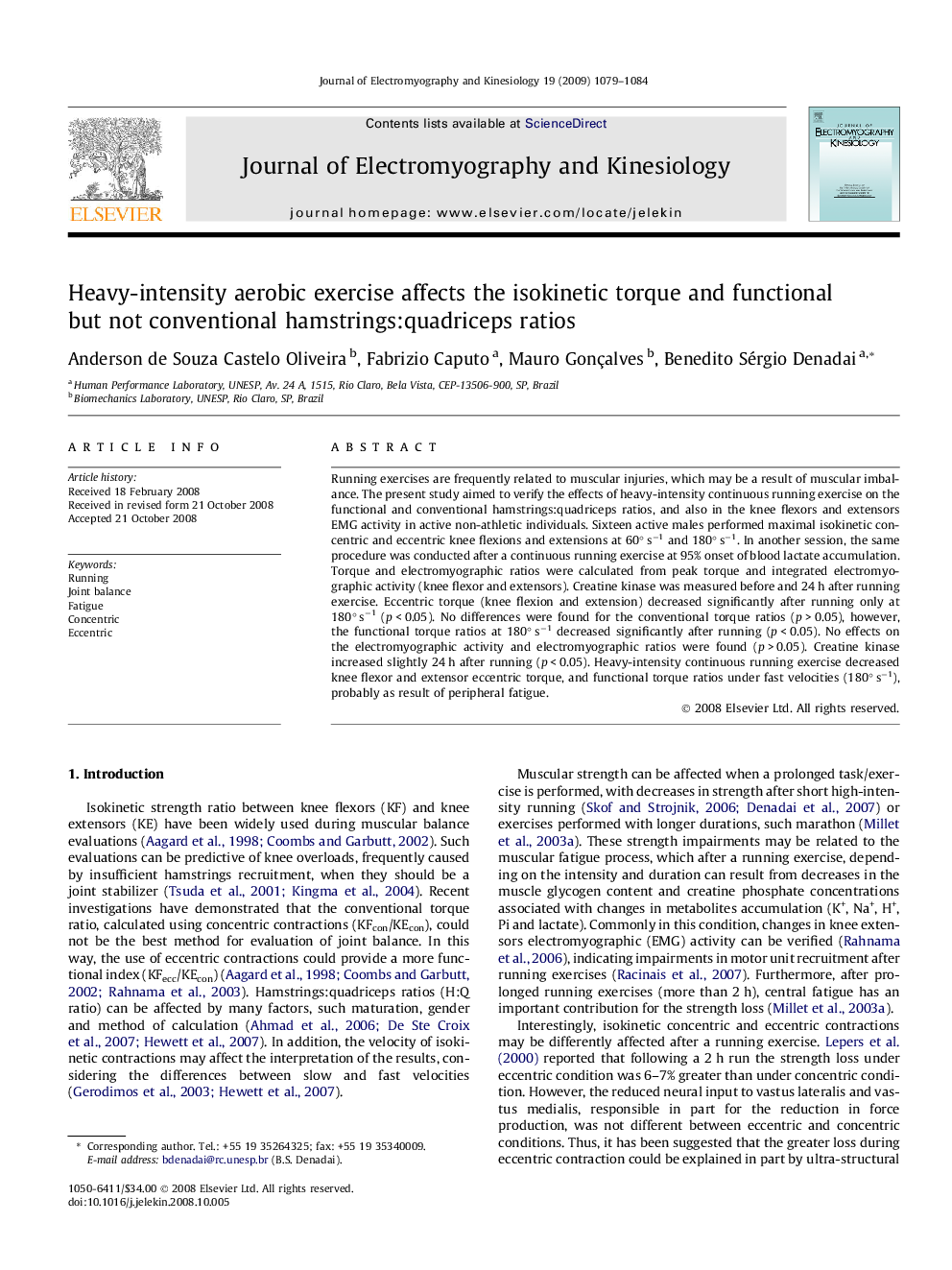| کد مقاله | کد نشریه | سال انتشار | مقاله انگلیسی | نسخه تمام متن |
|---|---|---|---|---|
| 4065411 | 1266251 | 2009 | 6 صفحه PDF | دانلود رایگان |

Running exercises are frequently related to muscular injuries, which may be a result of muscular imbalance. The present study aimed to verify the effects of heavy-intensity continuous running exercise on the functional and conventional hamstrings:quadriceps ratios, and also in the knee flexors and extensors EMG activity in active non-athletic individuals. Sixteen active males performed maximal isokinetic concentric and eccentric knee flexions and extensions at 60° s−1 and 180° s−1. In another session, the same procedure was conducted after a continuous running exercise at 95% onset of blood lactate accumulation. Torque and electromyographic ratios were calculated from peak torque and integrated electromyographic activity (knee flexor and extensors). Creatine kinase was measured before and 24 h after running exercise. Eccentric torque (knee flexion and extension) decreased significantly after running only at 180° s−1 (p < 0.05). No differences were found for the conventional torque ratios (p > 0.05), however, the functional torque ratios at 180° s−1 decreased significantly after running (p < 0.05). No effects on the electromyographic activity and electromyographic ratios were found (p > 0.05). Creatine kinase increased slightly 24 h after running (p < 0.05). Heavy-intensity continuous running exercise decreased knee flexor and extensor eccentric torque, and functional torque ratios under fast velocities (180° s−1), probably as result of peripheral fatigue.
Journal: Journal of Electromyography and Kinesiology - Volume 19, Issue 6, December 2009, Pages 1079–1084